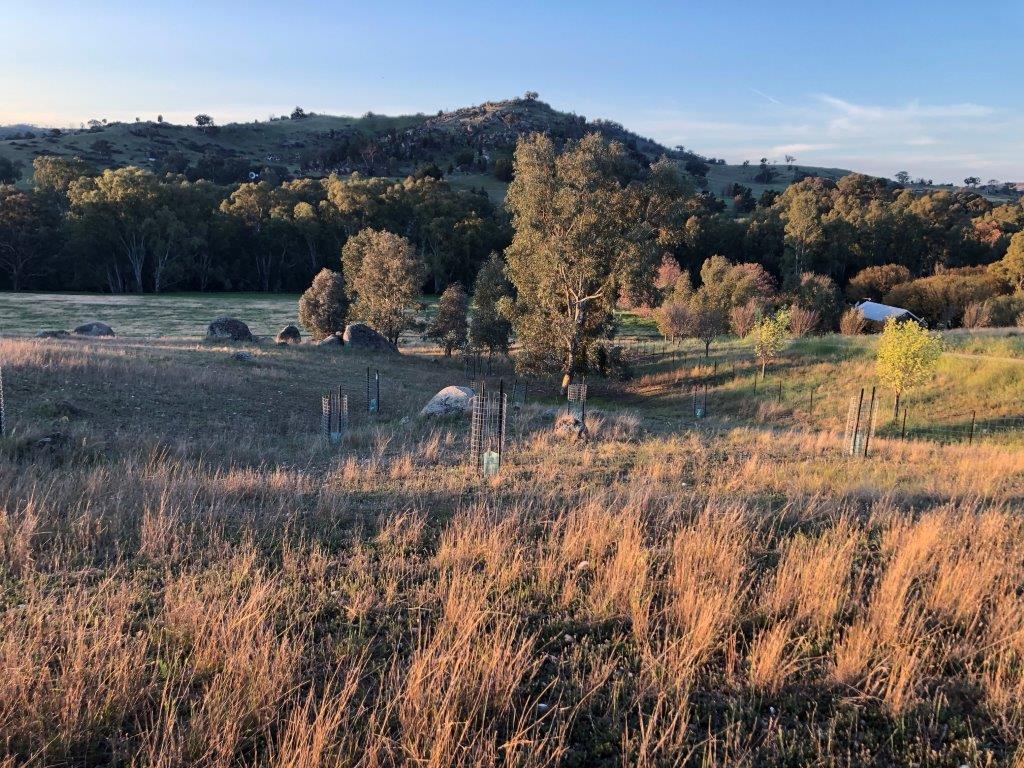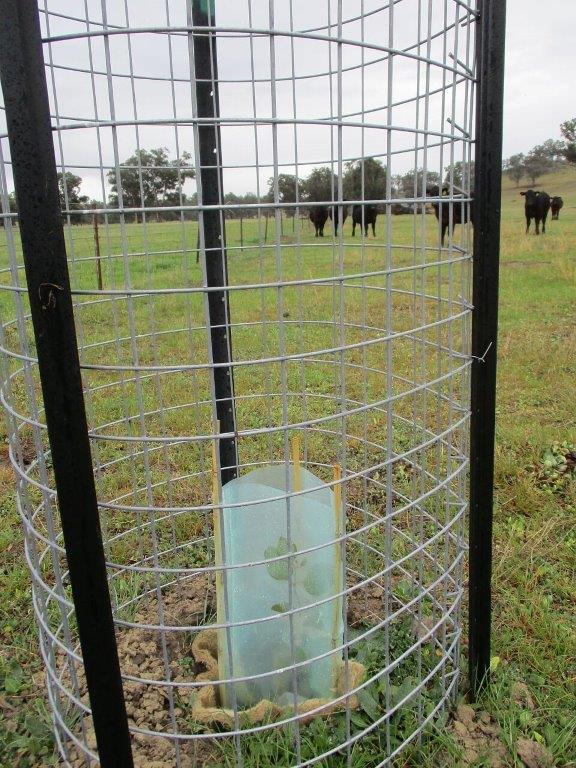Project Summary
Hovells Creek Landcare Group Inc Paddock Trees Project Case Study
Project Details
LINKING PADDOCK TREES FUNDED BY THE NSW ENVIRONMENTAL TRUST
Why Paddock Trees?
Scattered paddock trees are disappearing from our landscape. Many are more than 100 years old and when they die, they aren’t being replaced naturally because self-set trees are grazed by stock and so don’t get a chance to become established. Paddock trees provide shelter for birds, bats, insects, reptiles and mammals. They also support agricultural productivity through helping manage salinity, improving soil properties and providing shelter for stock. It is therefore important that they be replaced.
Grant Funding
In May 2016 HCLG was awarded $89,990 by the NSW Environmental Trust to cover the planting in the Hovells Creek area of 1,500 paddock trees within individual stock proof guards over the three-year period 1 Sept 2016 to 30 August 2019.
The Approach
The trees were planted as linking trees to provide connectivity between existing patches of trees and shrubs. Guidance for the planting layouts is based on a series of Habitat Connectivity Plans prepared in 2016 and 2017 by a consultant, Susie Jackson, for 13 individual properties. The objective was to plant paddock trees at 30-50m intervals within a 50m or even 100m wide corridor, so that birds, insects and small animals could use them as a bridge between existing patches of trees and shrubs. Actual on-farm layouts were sometimes modified from Susie Jackson’s original plans to take account of specific on-farm land use requirements. Where a property did not have a Habitat Connectivity Plan prepared then the requirement was that they follow the general principles behind the planting of connectivity trees.
2017 Plantings
A bulk order for rolls of tree mesh and steel posts was placed in late-2016 and was distributed to members in early-2017. In addition to the mesh and steel posts members were also provided with bulk grant-funded tube stock trees, weed mats, canes and plastic protectors by a local nursery. The original grant commitment was for 500 trees to be planted per annum across 10 properties. However, with careful buying of materials and some redesign of the project, it proved possible to plant 670 trees across 21 properties in 2017.
Advice to members on tree planting was provided through provision of a set of planting notes plus a list of recommended tree species for the various types of land where the trees are to be planted eg valley flats, granite hills and lower slopes. Lack of rain was a major obstacle to plantings, causing much of the planting to be delayed until late in the season, which meant that the young trees had only limited time to establish themselves before the dry and hot weather of summer. That notwithstanding, survival rates exceeded 95 per cent.
Monitoring of the results of the 2017 plantings was undertaken by HCLG’s Landcare Support Officer (LSO) and a copy of her report was submitted to the NSW Environment Trust in late-2017 as part of the group’s annual report to the Trust.
Feedback from the Trust on its review of HCLG’s annual report was very positive, including the comment that, “The Grantee should be highly commended for their level of commitment to both the on-ground activities implemented by landholder members, and the detailed information contained in the monitoring and financial reports.”
2018 Plantings
For 2018 materials were supplied to HCLG members to cover the planting of 678 trees across 22 properties. Members were only provided with trees and planting materials in 2018 who had either completed their 2017 plantings, or who had been obliged to delay their plantings in 2017 for personal or weather-related reasons.
Two changes in emphasis occurred in 2018. First, participating members were encouraged where consistent with their linking tree layout, to plant their trees along drainage lines or in gullies. This means that the planting conditions are often easier, as the ground is damper. Also, birds, insects and small animals have a preference for trees planted along drainage lines.
The second change was that members were encouraged to space their linking trees rather closer together to allow for some tree mortality over the next 100 years. This is a lesson which emerged from a talk given by Mason Crane to HCLG in early-2018.
2019 Plantings
2019 was the final year of the project and plantings were done on much the same basis as those in 2017 and 2018. A total of 1800 trees were planted across 22 properties over the three years.
JRB 5 June 2018, updated LSO 26 August 2020



Paddock Tree Planting at Hovells Creek, NSW (9.20 mins)
Provides an overview of how to plant tube stock paddock trees.
Hints on Using a Power Planter to Plant Paddock Trees (4.42 mins)
Using a Power Planter augur to drill holes for tube stock tree planting, especially in dry or hard ground.
Hints for Making Steel Mesh Tree Guards (8.25 mins)
Cutting up rolls of steel mesh to make tree guards for paddock trees.
Hints for Successful Kurrajong Paddock Trees (2.24 mins)
Growing on tube stock Kurrajongs for a year prior to planting out as paddock trees.
Why We Should Plant Paddock Trees in Early-Autumn (4.46 mins)
Examines the benefits of planting tube stock paddock trees in autumn (April/May) instead of in spring.
Resources:


